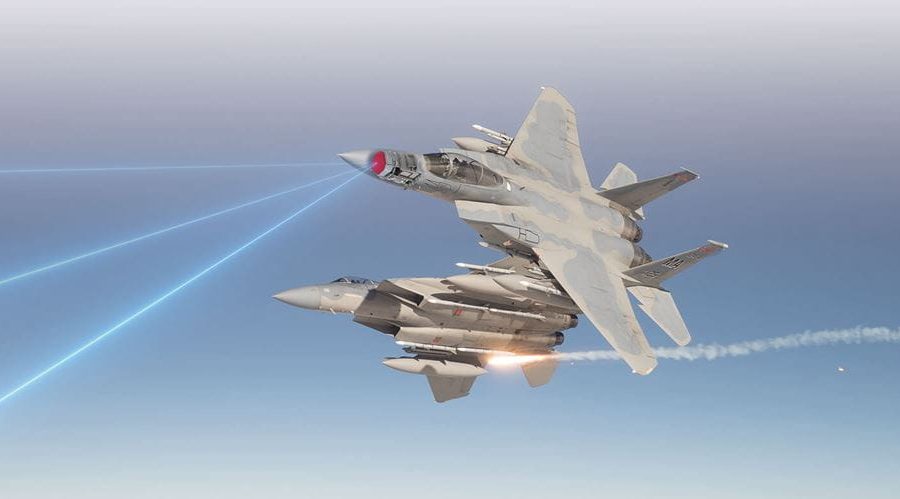RTX’s Raytheon is offering the Air Force and potential future users of Boeing’s F-15EX an enhanced APG-82 radar that promises greater effective range without requiring more power, enabling it to better detect low-observable targets.
The APG-82(V)X, announced at AFA’s Air, Space and Cyber Conference in mid-September, “incorporates cutting-edge gallium nitride (GaN) technology to enhance the radar’s effectiveness, delivering increased range, advanced air-to-air, air-to-ground, and electronic warfare capabilities,” the company said.
The new sensor detects and tracks more rapidly and engages “with multi-function fire control and EW [Electronic Warfare] capabilities,” a company spokesperson said. “It will help warfighters make faster decisions and provide superior situational awareness in contested environments.”
GaN supports higher voltages, but generates less heat than conventional gallium arsenide (GaAs) technology and potentially could permit a more dense array of transmit-receive (TR) modules in the same space and with less weight.
An Air Force official said “more power is good” because “we are now in this contest where we and the adversary are pushing each other back,” due to enhanced sensing and increasing range of detection. The range of weapons is becoming “the key currency” in the air-to-air competition, the official said.
The APG-82(V)X is an active electronically-scanned array (AESA) radar with thousands of TR modules, Raytheon said. These allow the radar to switch rapidly between broadcasting and detecting signals. Its signals can not only find and range targets, but also spoof other radars and jam communications. It provides “a crucial first-look, first-shoot advantage,” said Dan Theisen, president of Raytheon’s Advanced Products and Solutions group. It will give the F-15EX pilot “superior situational awareness,” he said.
The improved sensor would be paired with faster processors that can take full advantage of the radar’s improved sensitivity, hop frequencies faster and thus reduce the probability of intercept. A Raytheon official said the unit would essentially have the same internal footprint as the existing APG-82(V)1, making swapping one for the other easier. Increasing the range of detection is especially important for the F-15EX, which is not a stealth design and must therefore engage targets from greater distances.
The company announced the new radar almost simultaneously with announcing it has set a new distance record for shooting an AIM-120 Advanced Medium-Range Air-to-Air Missile, the F-15EX’s primary air-to-air weapon. Raytheon did not characterize the additional range achieved in the test shot, however, saying only that the improvement was “significant.”
The enhanced radar builds on the APG-82(V)1 now in the F-15E and F-15EX and is being developed at Raytheon’s El Segundo, Calif., facility, and would be produced in Forest, Miss., where the APG-82(V)1 is now built. The radar would also be exportable to foreign customers of the F-15EX or its variants, such as Indonesia, which wants to buy 24 F-15EXs, Israel, which has signaled its intent to buy the F-15IA variant, and Poland, which has voiced interest, as well. The F-15EX is based on the F-15QA, developed for Qatar.
Raytheon said the new radar is “scalable” and complies with open-architecture standards, meaning it is designed to be upgraded and adapted for other platforms and missions.
An Air Force official said the (V)X could “head off” some “vanishing vendor” issues inherent to the (V)1, which entered service 15 years ago and uses parts that are becoming hard to source.


